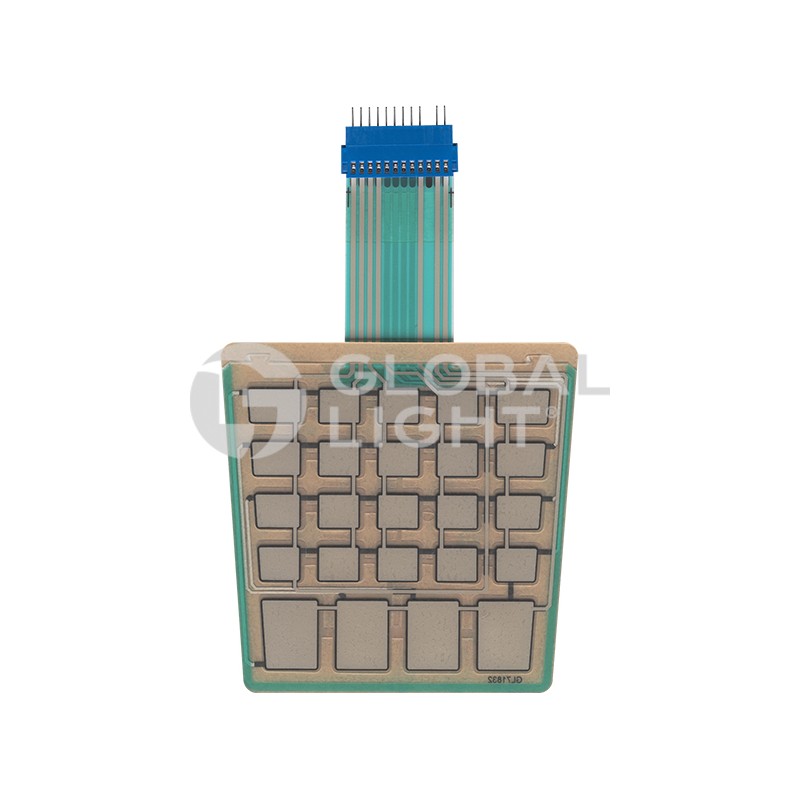How Membrane Switches Are Shaping the Future of Electronic Interfaces
How Membrane Switches Are Shaping the Future of Electronic Interfaces
Blog Article
Comprehending Membrane Layer Switches: The Key to Trustworthy and sturdy Controls

What Are Membrane Layer Switches?
Membrane switches are an innovative remedy in the realm of customer interface innovation, combining performance and style flawlessly. These devices work as an interface in between individuals and digital systems, integrating numerous elements into a compact layout. Normally constructed from versatile, thin layers of products, membrane switches are developed to respond to touch, making it possible for individuals to engage with equipment and digital devices properly.
The key aspects of a membrane layer button include a published circuit layer, graphic overlay, and a spacer layer that protects against unintended activation. The graphic overlay can be tailored to show brand name identification or individual preferences, boosting visual appeals while making sure use. Membrane buttons are generally utilized in different applications, consisting of medical gadgets, consumer electronics, and industrial tools, owing to their durability and resistance to ecological variables such as dampness and dust.
Among the crucial advantages of membrane switches is their ability to stand up to wear and tear, making them optimal for high-traffic atmospheres. Additionally, they are lightweight and call for marginal room, permitting for innovative designs in item advancement. On the whole, membrane changes represent a useful and effective choice for contemporary electronic interfaces, weding modern technology with user-centric layout concepts.
Exactly How Membrane Layer Switches Over Work
The operation of membrane switches joints on a basic yet efficient mechanism that translates individual input right into electronic signals. When a user presses the switch, the leading layer deforms, allowing a conductive element in the circuit layer to make call with an equivalent conductive pad on the underside of the visuals overlay.
The design of membrane layer switches can differ, however they commonly incorporate domes or responsive elements to offer responses to the user, enhancing the overall experience - membrane switch. The products used in membrane layer switches, such as polyester or polycarbonate, add to their sturdiness and resistance to ecological factors, including moisture and dust. The printed circuits are typically encapsulated, which safeguards them from wear and tear over time.
Benefits of Membrane Layer Switches

Additionally, membrane buttons are recognized for their toughness. Built from robust materials, they are immune to dust, moisture, and physical wear, which dramatically expands their life-span compared to typical mechanical look here buttons. This resilience makes them specifically suitable for high-traffic atmospheres and applications requiring long life.
An additional substantial benefit is the simplicity of cleansing and maintenance. The smooth surface area of membrane layer changes reduces dust build-up and is commonly invulnerable to spills, making them suitable for settings that need frequent sanitization.
In addition, membrane layer switches supply a streamlined account, bring about a thinner style that can be integrated into numerous tools without adding bulk. This function not only enhances the aesthetic appeal yet likewise adds to an extra ergonomic item layout.
Applications of Membrane Layer Switches
Versatile and straightforward, membrane switches discover applications throughout a vast array of markets, consisting of clinical tools, consumer electronics, and commercial tools. In the medical field, these buttons are indispensable to gadgets such as diagnostic tools, person surveillance systems, and mixture pumps, where dependability and convenience of cleansing are important. Their capability to preserve and stand up to rough atmospheres functionality makes them perfect for such applications.

In consumer electronics, membrane layer buttons are used in products like microwaves, washing makers, and remotes - membrane switch. Their sleek layout enables user-friendly customer interfaces, boosting the general user experience while offering durability and resistance to tear and use
Industrial devices likewise benefits from membrane buttons, especially in control panels for equipment and automation systems. These buttons supply defense versus dirt and moisture, making sure constant performance in challenging settings. Their adjustable functions allow makers to tailor them to certain operational requirements, boosting efficiency and performance.
Choosing the Right Membrane Layer Change
When choosing a membrane layer switch, it is important to take into consideration different aspects that affect performance find out here now and suitability for details applications. The main factors to consider include environmental conditions, responsive feedback, resilience, and layout specs.
First, analyze the operating atmosphere; switches revealed to moisture, chemicals, or severe temperature levels require certain materials to make sure longevity and performance. Next, evaluate the requirement for tactile comments. Depending upon customer interaction, some applications might benefit from a responsive response to verify activation, while others might choose a non-tactile style for aesthetic factors.
Resilience is one more essential variable; membrane buttons must be developed to withstand frequent use, influences, and abrasion. Ensure the chosen button can endure the expected lifecycle, especially in high-usage circumstances.

Verdict
Finally, membrane changes function as necessary parts in the style of durable and dependable control systems across various markets. Their compact design, combined with durable building and construction and customizable attributes, enhances individual Visit Your URL interaction while ensuring longevity popular environments. The adaptability of membrane changes permits customized solutions that fulfill certain functional requirements, enhancing their relevance in modern innovation. As industries remain to evolve, the value of incorporating effective membrane switch options can not be overemphasized.
Membrane layer changes stand for a critical facet of modern interface style, blending performance with strength in different applications.Membrane switches are a sophisticated remedy in the realm of customer interface modern technology, incorporating capability and layout flawlessly. Usually constructed from versatile, slim layers of products, membrane buttons are made to react to touch, making it possible for individuals to interact with equipment and electronic devices effectively.
The layout of membrane layer switches can differ, however they typically include domes or responsive aspects to offer responses to the individual, improving the general experience.In conclusion, membrane switches serve as necessary elements in the style of long lasting and reliable control systems throughout different industries.
Report this page